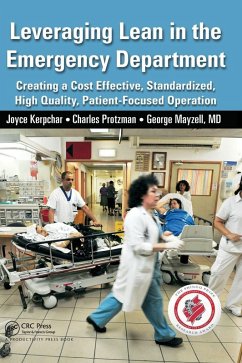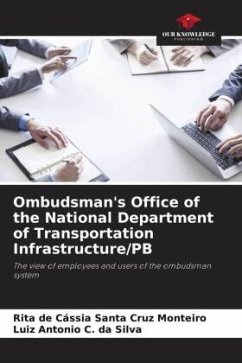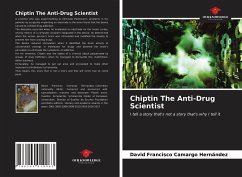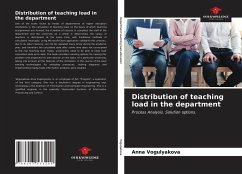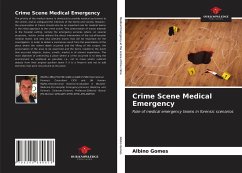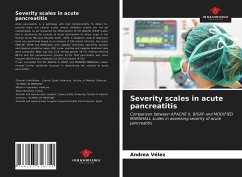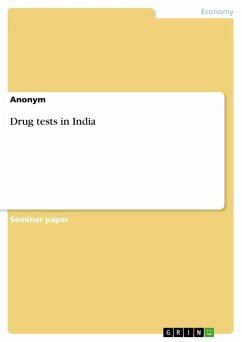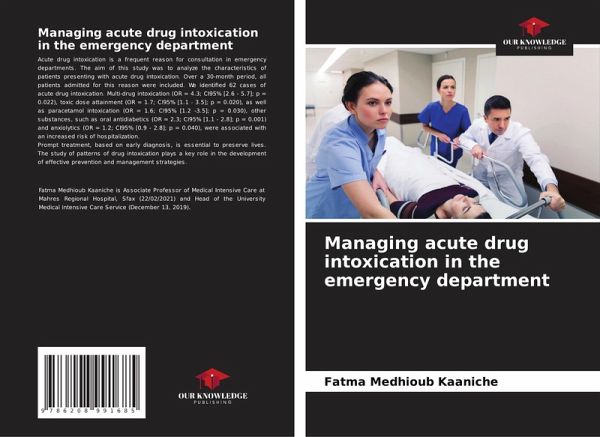
Managing acute drug intoxication in the emergency department
Versandkostenfrei!
Versandfertig in 6-10 Tagen
40,99 €
inkl. MwSt.

PAYBACK Punkte
20 °P sammeln!
Acute drug intoxication is a frequent reason for consultation in emergency departments. The aim of this study was to analyze the characteristics of patients presenting with acute drug intoxication. Over a 30-month period, all patients admitted for this reason were included. We identified 62 cases of acute drug intoxication. Multi-drug intoxication (OR = 4.3; CI95% [2.6 - 5.7]; p = 0.022), toxic dose attainment (OR = 1.7; CI95% [1.1 - 3.5]; p = 0.020), as well as paracetamol intoxication (OR = 1.6; CI95% [1.2 -3.5]; p = 0.030), other substances, such as oral antidiabetics (OR = 2.3; CI95% [1.1 ...
Acute drug intoxication is a frequent reason for consultation in emergency departments. The aim of this study was to analyze the characteristics of patients presenting with acute drug intoxication. Over a 30-month period, all patients admitted for this reason were included. We identified 62 cases of acute drug intoxication. Multi-drug intoxication (OR = 4.3; CI95% [2.6 - 5.7]; p = 0.022), toxic dose attainment (OR = 1.7; CI95% [1.1 - 3.5]; p = 0.020), as well as paracetamol intoxication (OR = 1.6; CI95% [1.2 -3.5]; p = 0.030), other substances, such as oral antidiabetics (OR = 2.3; CI95% [1.1 - 2.8]; p = 0.001) and anxiolytics (OR = 1.2; CI95% [0.9 - 2.8]; p = 0.040), were associated with an increased risk of hospitalization.Prompt treatment, based on early diagnosis, is essential to preserve lives. The study of patterns of drug intoxication plays a key role in the development of effective prevention and management strategies.



